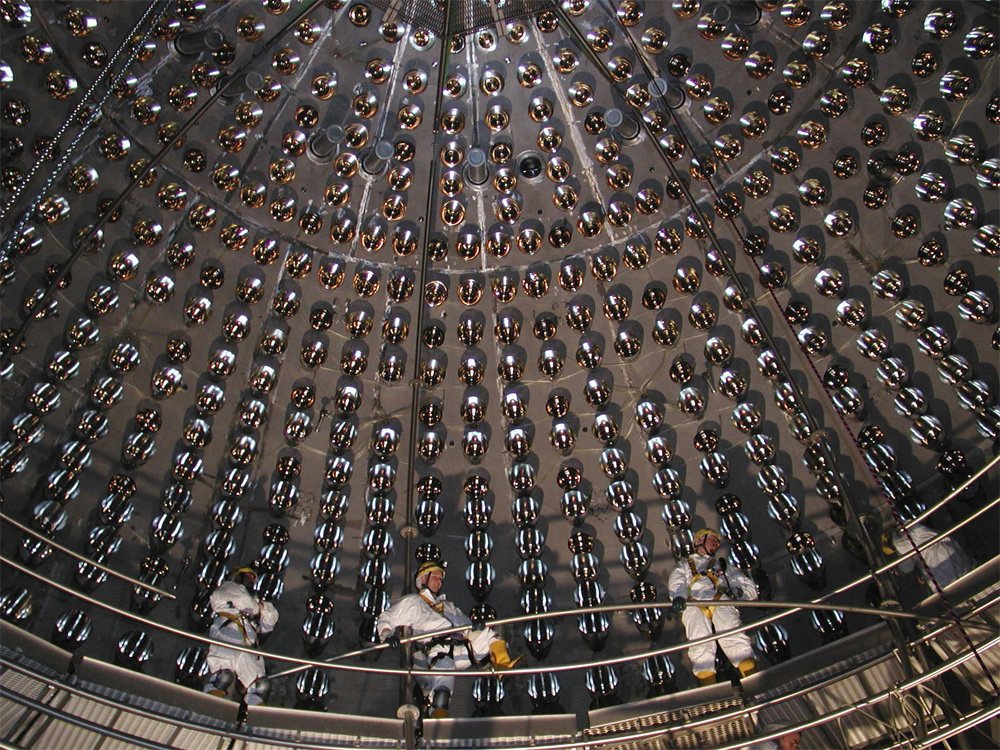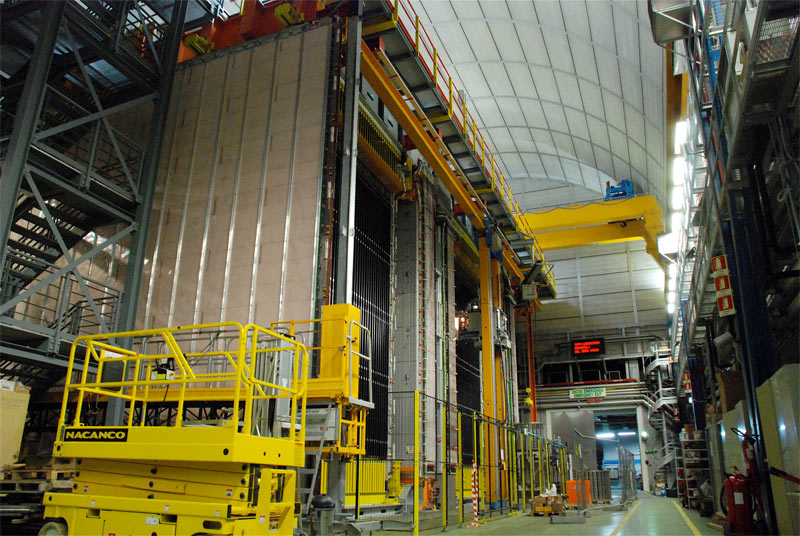Strange Particles May Travel Faster than Light, Breaking Laws of Physics

This story was updated at 6:20 p.m. EDT.
Nothing goes faster than the speed of light. At least, we didn't think so.
New results from the CERN laboratory in Switzerland seem to break this cardinal rule of physics, calling into question one of the most trusted laws discovered by Albert Einstein.
Physicists have found that tiny particles called neutrinos are making a 454-mile (730-kilometer) underground trip faster than they should — more quickly, in fact, than light could do. If the results are confirmed, they could throw much of modern physics into upheaval.
"The consequences would be absolutely revolutionary and very profound," said physicist Robert Plunkett of the Fermilab laboratory in Batavia, Ill., who was not involved in the new study. "That's why such a claim should be treated very carefully and validated as many ways as you can."
Rewriting the rules
The results come from the OPERA experiment, which sends sprays of neutrinos from CERN in Geneva to the INFN Gran Sasso Laboratory in Italy. Neutrinos don't interact with normal atoms, so they simply pass through the Earth as if it were a vacuum.
Get the world’s most fascinating discoveries delivered straight to your inbox.
After analyzing the results from 15,000 particles, it seems the neutrinos are crossing the distance at a velocity 20 parts per million faster than the speed of light. By making use of advanced GPS systems and atomic clocks, the researchers were able to determine this speed to an accuracy of less than 10 nanoseconds (.00000001 seconds). [Countdown: The Coolest Little Particles in Nature]
"According to relativity, it takes an infinite amount of energy to make anything go faster than light," Plunkett told LiveScience. "If these things are going faster than light, then these rules would have to be rewritten."
Previous studies have found that certain materials can travel faster than light through a medium. For example, certain particles are able to move more swiftly than light when travelling through water or oil. However, nothing should be able to move faster than light through a vacuum.
"It's really thought to be an absolute speed limit," said Michael Peskin, a theoretical physicist at SLAC National Accelerator Laboratory in Menlo Park, Calif. "Quantum field theory, the mathematical theory on which basically all results in particle physics are based, has the property that signals cannot travel faster than the speed of light through a vacuum. It’s really an absolute prohibition."
Backbone of physics
This cosmic speed limit, 299,792,458 meters per second (about 700 million miles an hour), forms the backbone of Einstein's seminal Theory of Special Relativity, published in 1905. To rewrite this law would have broad-ranging implications, including even the possibility of time travel.
And the findings aren't just in conflict with existing theory, but other measurements as well. For example, a famous study from the Kamiokande II experiment in Japan of the supernova SN1987A, which lies about 168,000 light years from Earthin the Large Magellanic Cloud, found that light and neutrinos that departed this exploded star arrived at Earth within hours of each other. This measurement was used to prove that neutrinos travel within 1 part in 100,000,000 of the optical speed of light.
Yet the new OPERA discovery suggests that neutrinos actually surpass the speed of light by 60 nanoseconds over 730 kilometers, which corresponds to 2 parts in 100,000, "which exceeds the SN1987A limit by a factor of more than 2,000!" astronomer Derek Fox of Pennsylvania State University wrote in an email. "So the observation is in dramatic conflict with the SN1987A result (which is not in doubt)."
But this doesn't mean that the OPERA results are wrong, Fox said. He suggested some theoretical solution, perhaps even involving string theory, could reconcile the two measurements.
Inviting skepticism
Realizing full well how scandalous the results will be if they are borne out, the scientists behind OPERA, led by Antonio Ereditato of the University of Bern, have decided to make their data public, in hopes of inviting scrutiny that could make sense of such radical findings. The scientists also intend to gather more data and further analyze their measurements in order to establish them more fully, or refute them. Their results will be published Friday (Sept. 23) on the physics preprint site ArXiv.
One of the best hopes to verify or disprove the findings comes from Fermilab's MINOS experiment, which also sends neutrinos flying underground over a similar distance to end up at the Soudan mine in Minnesota. In 2007, MINOS researchers found a trend in their data that suggested neutrinos might be arriving early, as they do in the new CERN data. However, the experiment at the time did not have enough precision to rule out the possibility that the results were a statistical fluke. [Gallery of Mysterious Lights]
"There was something that could have been a fluctuation in the direction of things arriving early, but it didn't have enough significance for us to make such a claim," said Plunkett, who is a co-spokesperson for MINOS. "Obviously, the hunt is on and we'll be upgrading that previous measurement and also implementing something we already had in the works, which is a plan to make improvements so we can reduce our errors. One of our next objectives is going to be trying to verify or disprove this result as hard as we can."
CERN plans to discuss the findings Friday during a public seminar that will be broadcast at http://webcast.cern.ch.


